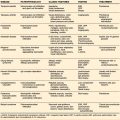210 Informed Consent and Assessing Decision-Making Capacity in the Emergency Department
• To respect patient autonomy and abide by the law, the physician must obtain informed consent from a patient before examination and treatment.
• To satisfy the requirement for informed consent, three elements must be present: (1) disclosure of information by the physician must be adequate, (2) the patient’s decision must be voluntary, and (3) the patient must possess decision-making capacity.
• Decision-making capacity is a medical determination made by the treating physician and is specific to the clinical decision at issue.
• The emergency department environment poses unique challenges to determination of decision-making capacity.
• To possess decision-making capacity, a patient must have the ability to (1) communicate a choice, (2) understand relevant information, (3) appreciate the significance of information to the patient’s own individual circumstances, and (4) use reasoning to arrive at a decision.
Informed Consent
Background
The concept of informed consent is based on both ethical and legal obligations that have evolved over the past century. The ethical foundations of informed consent are that the physician must strive to balance the goals of acting in the best interest of the patient while respecting the patient’s autonomy to decide what is best for his or her own body. Currently, informed consent requires an active role on the part of the patient, as well as respect for the patient’s wishes by the emergency physician (EP).1
The legal foundation of informed consent centered initially on protection of the patient from battery or unwanted touching. In 1914, Justice Cardozo succinctly stated that “Every human being of adult years and sound mind has a right to determine what shall be done with his own body.”2 The presumption is that every adult has the right to accept or decline recommended treatment from a physician.
When the patient is a minor, the general rule is that informed consent must be obtained from a parent before a physician may proceed with nonemergency treatment. However, EMTALA3 (Emergency Medical Treatment and Active Labor Act) permits a physician to evaluate every patient, including minors, to assess whether an emergency medical condition exists and to stabilize any such condition.4 Many exceptions exist to the general rule of parents consenting for their minor children. For example, a minor may have the ability to consent to treatment of sexually transmitted diseases or drug addiction. These exceptions vary from state to state, however, so it is important to be familiar with the local laws where you practice.
Today, in the absence of a recognized exception to the requirement for informed consent, failure to obtain consent properly may also result in liability under the legal theories of privacy or negligence. In the emergency department (ED), we often find ourselves in circumstances in which the so-called emergency exception applies. The emergency exception states that consent is implied in cases in which an immediate threat to the life or health of the patient exists, when the proposed treatment is necessary to address the emergency condition, and when one is unable to obtain express consent of the patient or someone authorized to consent on the patient’s behalf. In these instances the EP may presume that the patient would consent to the emergency treatment, and the EP does not need to obtain express consent before proceeding with treatment.5
Elements
The scope of information to be disclosed is well established in theory but challenging in practice. The physician must disclose (1) the nature of the disease or problem and the nature and purpose of the proposed treatment or procedure; (2) the potential benefits and risks associated with the proposed treatment or procedure, as well as the likelihood that they will occur; and (3) alternative approaches, as well as the benefits and risks of such alternatives.6
Fulfillment of the disclosure element in the ED poses several challenges. For example, the time for patient-physician interaction is often limited in the ED. In addition, a quiet and private setting for discussion is often unavailable. Furthermore, the EP is typically working with limited knowledge about the full scope of the patient’s medical history, intellectual capabilities, and emotional state.7 It is the EP’s responsibility, however, to minimize the impact of these challenges and to provide information that will maximize the likelihood that the patient will participate effectively in the decision-making process.
Decision-Making Capacity
To possess decision-making capacity, the patient must exhibit the following four abilities: (1) to communicate a choice, (2) to understand relevant information as it is communicated, (3) to appreciate the significance of the information to his or her own individual circumstances, and (4) to use reasoning to arrive at a specific choice.7,8 When patients cannot demonstrate these abilities, they lack the capacity to give informed consent for their medical care.
In all instances the physician must balance the interests of protecting the patient from harm while respecting patient autonomy. The level of scrutiny that a physician applies to evaluating capacity therefore varies depending on the decision to be made and the risks and benefits of the proposed medical care. For example, if a patient with a superficial abrasion refuses the application of a bandage, the EP should exercise a very low level of scrutiny when assessing the patient’s capacity to make decisions. If the same patient, however, refuses a CT scan after head trauma with prolonged loss of consciousness, the EP should scrutinize the patient’s capacity at a much higher level. This general approach to evaluating decision-making capacity is often referred to as the sliding scale model. Determination of capacity can be made only with reference to the particular facts surrounding an individual decision by the patient; as the risks associated with a decision increase, the level of capacity needed to consent to or refuse the intervention also increases.9
When to Exercise Additional Care in Assessing Capacity
Assessing a patient’s decision-making capacity is an implicit part of every medical encounter in the ED. The process is generally spontaneous and straightforward and takes place as the EP examines and talks with the patient. The EP’s starting point is always the presumption that an adult patient has the requisite capacity to consent to or refuse medical treatment. Under certain circumstances, however, a more detailed and direct inquiry into a patient’s decision-making capacity must be performed (see the “Red Flags” box). Although no accepted rules exist regarding when the EP must delve more deeply into this issue, certain situations should alert an EP to the need to assess a patient’s decision-making capacity more carefully.10
![]() Red Flags
Red Flags
Signs That a More Careful Evaluation of Capacity Might Be Warranted
A third broad area that should prompt the EP to evaluate the patient’s capacity more carefully is the presence of a known risk factor for impaired decision making. Risk factors may include known psychiatric conditions such as severe depression or schizophrenia.8 Although the presence of mental illness does not automatically preclude a patient from having the right to participate in his or her medical care, in such an instance it may be helpful to seek the opinion of a psychiatrist. If cultural or language barriers are present or if concerns exist about a patient’s level of education, the EP should also exercise heightened scrutiny of the patient’s decision-making capacity. In these instances the EP must take steps to compensate for these factors to ensure that the patient has the greatest opportunity to participate in his or her medical care. The EP should arrange for a translator when necessary and should take additional time to explain the issues in terms that the patient can more readily understand. Extremes of age are also known risk factors for impaired decision making. Although not every patient over a certain age exhibits dementia, the EP must be aware of the increased prevalence of this condition in elderly patients. Other common risk factors in the ED are extreme pain, stress, and anxiety, each of which can impair a patient’s ability to receive or process information.11
Although the foregoing situations are by no means all-inclusive, they represent instances that should put an EP on notice that a more careful and detailed evaluation of capacity may be needed. Again, none of these circumstances will alter the presumption that an adult possesses the requisite capacity to participate in his or her medical care. They simply mark the need for a more detailed inquiry. In each of these instances the EP should take additional care when documenting the care of the patient, as well as his or her interactions with the patient. Specifically, the physician should document any evaluation that is conducted of the patient’s capacity (see the “Documentation” box).
![]() Documentation
Documentation
When Capacity Is at Issue
• Whether the patient exhibits each of the elements of decision-making capacity
• The patient’s medical condition
• The proposed treatment or procedure and its necessity
• The urgent or emergency nature of the proposed treatment or procedure
• Actions by the EP to maximize patient capacity
• Actions by the EP to minimize impediments to patient capacity
• Availability and involvement of family members or surrogate decision makers
Suggested Questions to Aid in the Determination of Capacity
The final determination of a patient’s decision-making capacity depends on whether the EP believes that the patient exhibits the four abilities required for capacity: (1) to communicate a choice, (2) to understand relevant information as it is communicated, (3) to appreciate the significance of the information to his or her own individual circumstances, and (4) to use reasoning to arrive at a specific choice. Thus the EP’s inquiry should consist of focused questions to evaluate each of these areas11,12 (see the “Tips and Tricks” box).
Tips and Tricks
Questions to Ask Patients to Facilitate the Determination of Decision-Making Capacity
1 Code of ethics for emergency physicians. Ann Emerg Med. 2008;52:581–590.
2 Schloendorff v. Society of New York Hospital. 1914;105 N.E. 92.
4 Bitterman RA. The medical screening examination requirement. In: Bitterman RA, ed. EMTALA: providing emergency care under federal law. Dallas: American College of Emergency Physicians; 2000:23–65.
5 Bisbing S. Competency and capacity: a primer. Baxter S, ed. Legal medicine, 4th ed, St. Louis: Mosby, 1998.
6 Derse A. What part of “no” don’t you understand? Patient refusal of recommended treatment in the emergency department. Mt Sinai J Med. 2005;72:221–227.
7 Appelebaum PS, Grisso T. Assessing patients’ capacity to consent to treatment. N Engl J Med. 1988;319:1635–1638.
8 Appelbaum PS. Assessment of patients’ competence to consent to treatment. N Engl J Med. 2007;357:1834–1840.
9 President’s Commission for the Study of Ethical Problems in Medicine and Biomedical and Behavioral Research. Making health care decisions: a report on the ethical and legal implications of informed consent in the patient practitioner relationship. Washington, DC: U.S. Government Printing Office; 1982.
10 Tunzi M. Can the patient decide? Evaluating patient capacity in practice. Am Fam Physician. 2001;64:299–306.
11 Grisso T, Appelbaum P. Assessing competence to consent to treatment: a guide for physicians and other health professionals. New York: Oxford University Press; 1998. p. 61
12 Magauran BG. Risk management for the emergency physician: competency and decision-making capacity, informed consent, and refusal of care against medical advice. Emerg Med Clin North Am. 2009;27:605–614.



